Related Link:
Meet the Winners
From diverse technical, business and skilled trade backgrounds, ENR’s 2024 National Top 20 under 40 winners have emerged as leaders at their respective organizations. they say industry Collaboration is key to recruit, retain and cultivate the next generation of workers.
Now more than ever, recruiters must be honest and up front about the physical and mental demands of working in the AEC industry, says Rod Jones, a manager at Holder Construction Co., during a roundtable with the Top 20 held in Chicago during ENR’s Emerging Leaders Forum in March.
“Our industry is a grind,” adds Jones, who helped establish a talent pipeline from his historically Black alma mater, Morgan State University, to his firm. “It’s demanding; it’s very much a service industry, and with that you have to set the expectations with the workforce.”
“It’s an overall evolution of our industry. It’s not only Gen Z, it’s how we see our whole industry from A to Z, because that’s how change will happen. It’s a shift in the mindset.”
Ioanna Magiati,
Partner, AO Architects
Recruitment is about risks and rewards, says AO Architects partner Ioanna Magiati, adding that there must be a “two-way investment” of expectations between managers and employees.
“You cannot just expect to get, you have to give” she says. “Invest in them, and they invest back in you.”
Investment in the next generation of talent can begin as early as kindergarten, so “by the time they’re through middle school, you’ve opened their eyes to a world,” says Balfour Beatty Construction Senior Project Manager Aislinn Nagy, who serves on her alma mater Virginia Tech’s advisory board.
These conversations and more are ushering in “an overall evolution of our industry,” says Magiati, the first woman partner in Senior Project ManagernagyAO’s 50-year history. “It’s not only Gen Z, it’s … our whole industry from A to Z, because that’s how change will happen.”
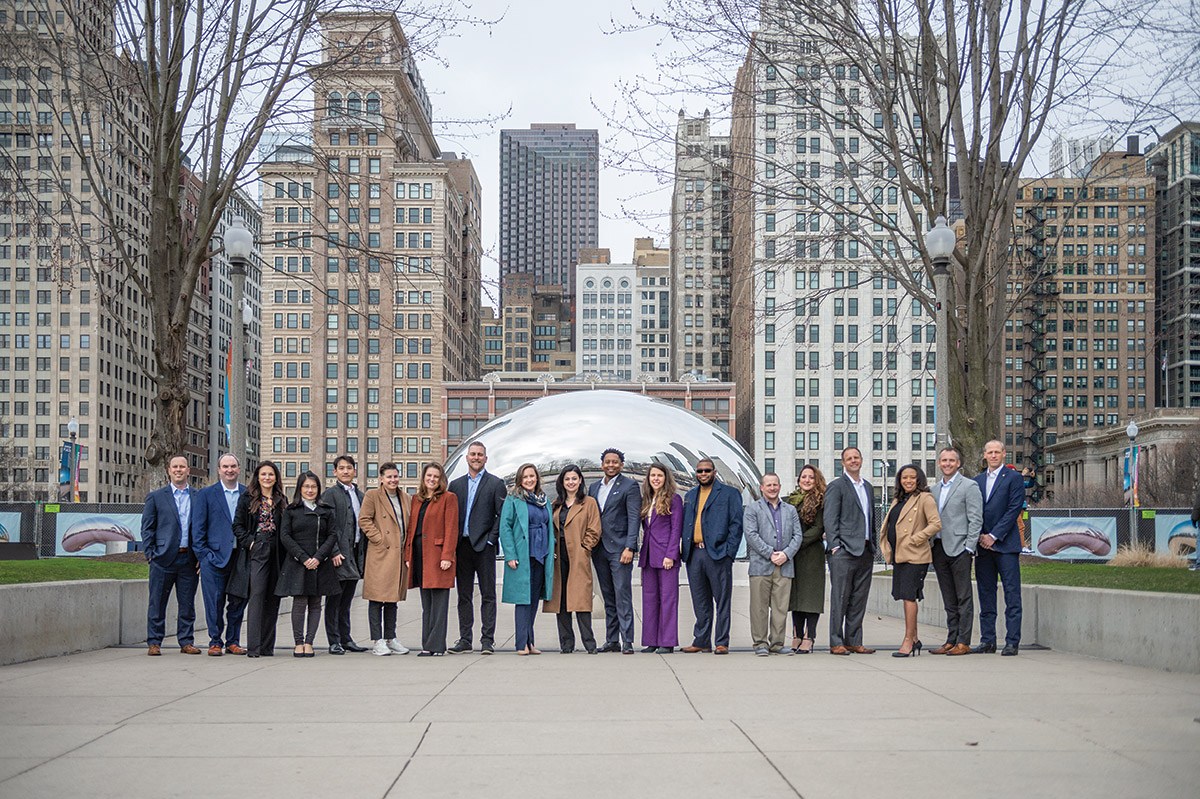
Some of the best and brightest, ENR’s 2024 cohort of Top 20 Under 40 winners toured the Windy City, stopping at the famous Chicago Bean.
Photo by Jessica Savidge
How the Top 20 UNDER 40 Winners Were Picked
ENR’s 2024 Top 20 Under 40 were selected from nearly 530 nominations submitted last fall from across the U.S. and Puerto Rico. Candidates had to be under 40 years old as of Jan. 1, 2024. ENR’s 10 regional editions assembled local juries that each scored and selected up to 20 people.
The top five scoring candidates in each region automatically advanced to the national level, where a new panel of independent industry judges reviewed the total of 50 nominees and chose 20 individuals who represent the pinnacle of leadership skills, community service, work ethic, talent and diversity.
This year’s judges were:
Mani Golparvar
Professor and CSO/Co-Founder
University of Illinois at Urbana-Champaign/Reconstruct
Megan Schulze
Associate Vice President
Dewberry
Jake Schmidt
Project Development Manager
FCI Constructors Inc.
Work-Life Balance
With a greater awareness of employee burnout, AEC firms are responding with more flexible work schedules
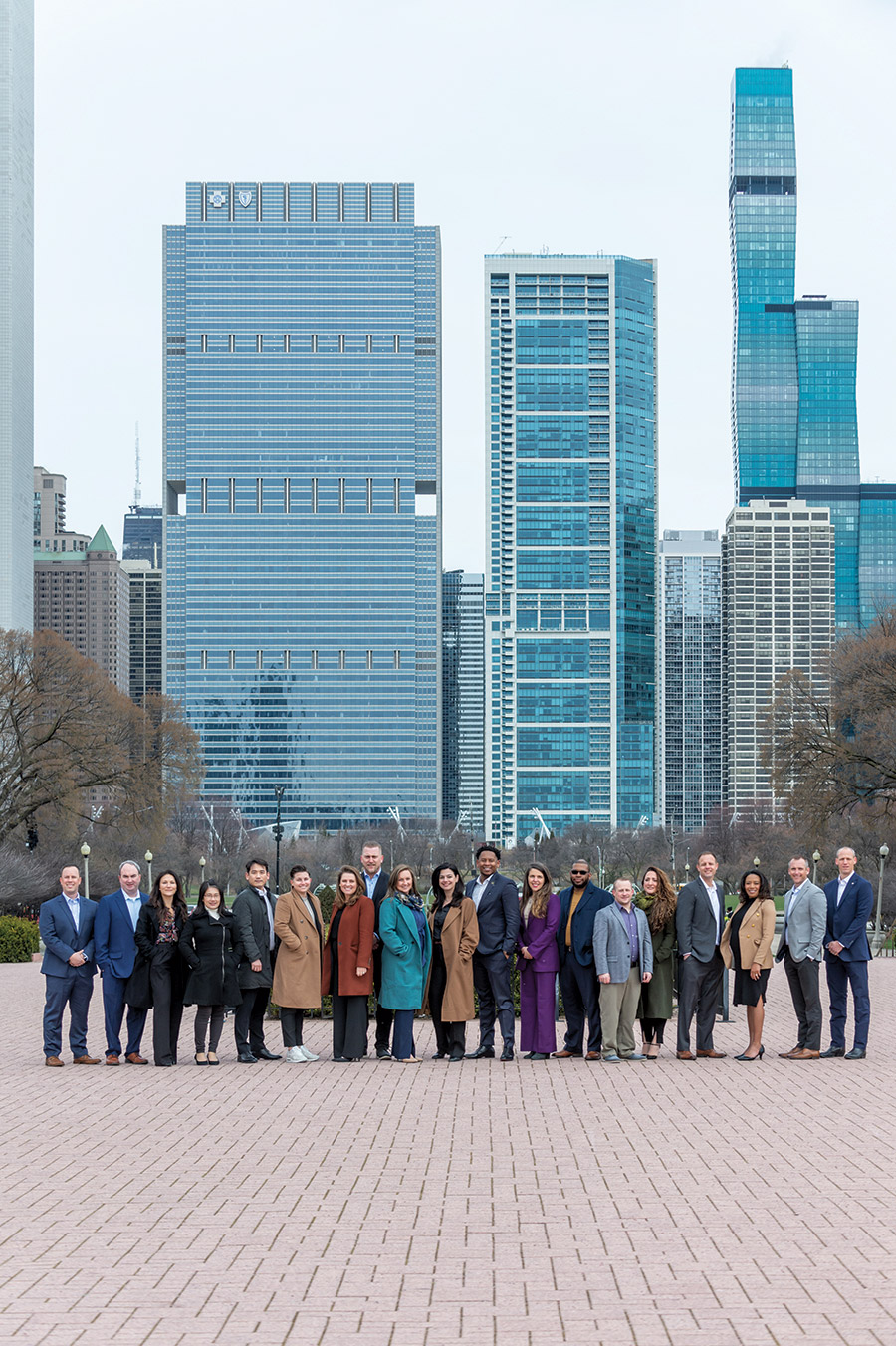
After industry judges selected a total of 180 winners across ENR’s 10 regions, another set of judges selected this year’s national Top 20.
Photo by Jessica Savidge
At many of the Top 20’s firms, recruitment and retention initiatives begin at the office with work-life balance. As the COVID-19 pandemic exposed the dangers of burnout, many firms have responded with more flexible working hours and embracing digital collaboration.
“I really like the idea of flexibility,” says Lauren Taylor, WSP USA’s vice president, district planning lead for Texas. “On a staffing level, I think having that flexibility does allow for better people working for you, happier people working for you and better teams.”
Prior to the pandemic, Taylor says big teams would fly in to contribute their niche expertise. “Now I’ve got my planners locally but then I can reach out to best practice practitioners throughout the country that are able to come in, not physically, and really work with clients to make better projects.”
More than being able to work from home full-time, Justin Lamb believes people want the option of flexibility to tailor their professional environment to what works best.
“We have people across a variety of roles that come together to execute projects, and some of it can function more efficiently individually at home,” says Lamb, Fluor’s project director and general manager for Research Triangle Park in North Carolina. “Most people are looking for flexibility. They want to know that they have the flexibility to adapt when they need to, and we can support that.”
While many companies are embracing work-from-home policies, some construction roles are less flexible, says Harkins Builders President and CEO Ben Nichols.
“Construction is interesting because you can’t build a construction project from home. It’s an impossible thing to do,” he says. “So most of our workforce is out on project sites working hard.”
Yet with careful planning, even jobsite-intensive roles can have a day at home, says Nichols. “Whether it’s an estimator that’s really focusing on takeoffs that day, and if they can have a quiet silent house where they can crank out takeoffs … I think there are opportunities to leverage that type of flexibility in a hybrid workforce.”
“I really like the idea of flexibility. On a staffing level, i think having that flexibility does allow for better people working for you, happier people working for you.”
Lauren Taylor,
Vice President, WSP USA
Flexibility can mitigate jobsite stress, and at many firms flexibility begins with building trust between managers and their teams.Balfour Beatty Construction's Nagy says a consulting company helped the firm adopt a leadership model known as CARES: connection, autonomy, respect, equity and surety, which has helped managers build better relationships with their teams.
“If you have all five of those things in place with your team and you’ve built a relationship with them, you’re connected with them and you give them the autonomy to do what they need to do,” says Nagy. “And maybe some of that work shifts to being on a different timeline than you’re comfortable with, but you respect what you’ve got going on in your life, as much as you respect that they have things going on in their life as well.”
The subject of work-life balance also incorporates mental health awareness and access to resources such as "Yinz Good?," an initiative that includes videos and toolbox talks on job burnout and substance misuse. It was founded by the Constructors Association and the Master Builders’ Association of Western Pennsylvania.
“Burnout” is still a new term for many firms, says Taylor, and finding a solution will take time and planning.
“As a leader—a people leader or a project leader, I really look at what I know worked better in the past, what’s working well now, and how can I combine the two,” she says.
Workforce Development
Amid recruitment and retention efforts, there is a shift in the perception of construction work
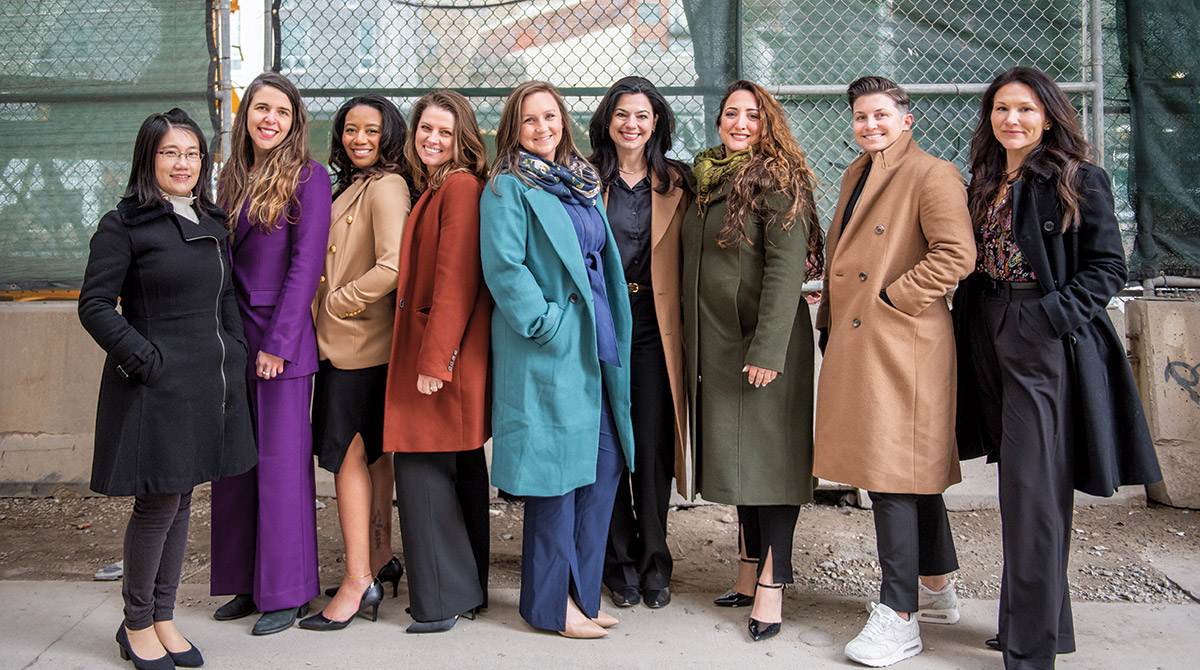
Top 20 Under 40 winners say leadership on a jobsite often begins at the office, with team building, collaboration and workforce development opportunities.
Photo by Jessica Savidge
For many Top 20 Under 40 winners, workforce development is about meeting potential industry professionals where they are when it comes to skill level.
Holder manager Jones created a social media brand around his career in construction called Rod the Builder, which offers brief informational clips to broaden awareness of opportunities in construction management, particularly among students.
“Companies need to be intentional with their presence, and a lot of them are on Instagram, on TikTok now … it’s just meeting people where they’re at and exposing the industry,” says Jones, who is also an adjunct professor at his alma mater.
“There are so many careers in construction that you don’t see that don’t involve swinging hammers or using tools, but they are all vital parts of the construction process.”
André Barbour, Diversity and Inclusion Director, NEI General Contracting
André Barbour, diversity and inclusion director for NEI General Contracting in Randolph, Mass., says many people are never introduced to construction as a viable career path.
In response, NEI created its Workforce Opportunity Resource Center to recruit minority field workers with low- or no-cost training. “There are so many careers in construction that you don’t see that don’t involve swinging hammers or using tools, but they are all vital parts of the construction process,” says Barbour.
Overall, the construction field needs to change outdated perceptions to better attract young workers, says Sara Sadek, director of corporate quality assurance and quality control at PJ Dick in Pittsburgh.
“Really, we [need] to tweak the culture or perception of it,” she says. “Make it something exciting so that, if you’re a creative person, and you like to work with your hands, are good at three-dimensional thinking and work well on a team … then you can make good money and have a career ahead of you that’s fulfilling and that you are proud of.”
Recruiting at high schools is “too late,” says KK Clark, project executive at Clark Construction. Agreeing with Nagy’s suggestion to start as early as kindergarten, Clark says the contractor’s recruitment “focuses on sixth, seventh and eighth graders” and “tapping into those underestimated communities” to get them into an apprenticeship program or a junior college.

Photo by Jessica Savidge
Yet hiring is only one part of the equation, says Rory Mele, director of environment, health and safety for BHI, adding that companies also need an employee promotion plan.
He says companies should ask “how do I mold them into the leaders we want them to be? What kinds of programs do we have in our organization to train them and create a clear path for them?” In Utah, there is a Talent Ready program that enables young people to pursue a career in construction while earning a sustainable family wage and continuing their education debt-free, Mele explains.
Irene Turletes, HDR Engineering water resources market sector lead, says construction has a greater mission that could also appeal to entry-level workers.
Working in places such as rural Alaska, where there are few stormwater and wastewater treatment systems, gives Turletes a sense of purpose and accomplishment that is fulfilling beyond a paycheck.
“We get to do work in places that may not have functioning basic infrastructure,” she says. “If you are able to make a difference in a village of 200 people—how powerful is that? It’s incredibly motivating.”
Working Smarter
Harnessing AI-powered tech and third-party certification standards
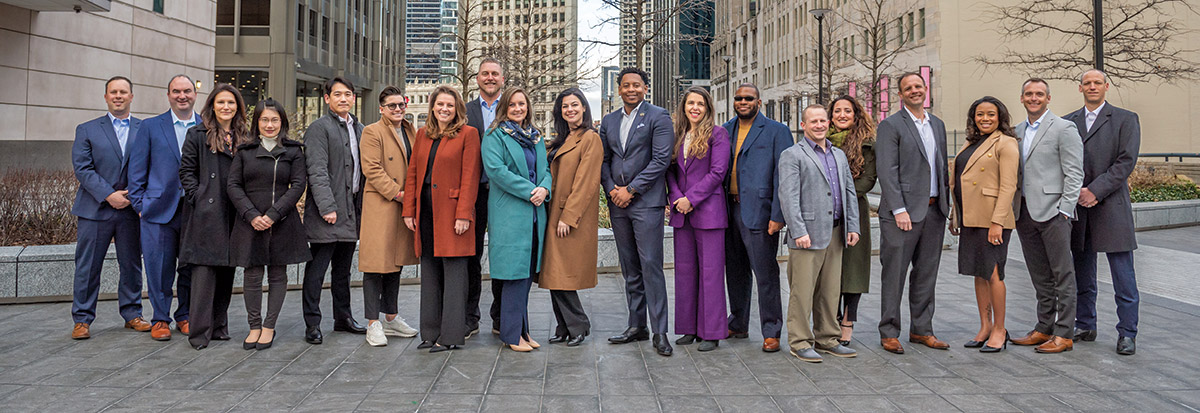
This year’s cohort of national Top 20 winners includes 10 men and 10 women. Not pictured is Sadia Janjua, who was unable to attend
the event.
Photo by Jessica Savidge
There is a correlation between labor challenges and the number of firms investing in artificial intelligence-powered tools, says John Hoodjer, vice president and group manager at JE Dunn Construction. Because of recruitment shortfalls, firms are looking to work smarter with fewer hands, he says.
“We do not have enough workforce to execute on the amount of work that we need to execute on,” says Hoodjer. “AI is going to make us more effective … it’s going to make us more productive.”
Integrating AI Ideas

If harnessed efficiently, AI can revolutionize how the industry plans, designs, constructs and operates assets, says Sadia Janjua, chief of digital transformation at the Port Authority of New York & New Jersey. Integration is a key challenge, ensuring that the workforce is “reskilled and upskilled effectively” to keep up with technological advancements. Janjua, who could not attend the roundtable, says it’s critical to “document current and future operating models, aligning them with the overall mission of the organization .... This includes understanding the organizational structure, resources required and the capabilities that employees need to possess to deliver core functions effectively. It is crucial that the training aligns with the actual use of new technologies.”
Clark Construction’s KK Clark was also optimistic about how AI could allow firms to “focus on what really matters,” yet there are still limitations to how much the technology can automate.
Alternatively, KiSeok Jeon, STV vice president and digital advisory lead, says firms should focus not on automation but on their “data framework,” which he terms the “fundamental layers” that AI will use. With this, adds Jeon, there is only one question to ask AI tech vendors: “Can your AI be implemented with the data framework we have?”
He says the introduction of technology could also shift the way firms put value on different roles.
“I think it’s a cultural thing of how we actually see the labor force,” Jeon says. “It shouldn’t be driven by education; it should be driven by what [the work] is actually worth.”
Industry demands for faster construction and third party certifications are also compounding workforce challenges. PJ Dick’s Sadek says she has noticed a Passive House building boom, which she described as “LEED on steroids.” She adds: “There’s a lot of risk associated with that, so there are a lot of programs these days to provide hands-on training for workers in the field.” Over the past five years, Sadek says her company has trained 40 employees in Passive House building principles.
“We do not have enough
workforce to execute on the amount of work that we need to execute on.”
John Hoodjer, Vice President and Group Manager, JE Dunn Construction
Pre-fabrication also can be a solution for firms to work smarter amid labor challenges, says Sadek. She notes that prefabrication has positive impacts on the workforce such as reducing injuries and increasing diversity, recalling a project involving pre-fabricating large panels for a university.
“They were able to fabricate everything in an enclosed environment throughout the winter and at table heights so there was less wear and tear on people’s bodies,” says Sadek. “There were also more women working there because it was at table height and it was more accessible to their body size.”
In environments where there is not enough skilled labor available to build on site, HDR’s Turletes raised the issue of whether firms could be depriving local workers of jobs.
“It’s an important conversation to have,” she says. “And how are we training the local workforce?”
At the end of the day, Fluor’s Lamb says, the way firms innovate on a jobsite has to make sense for the project deliverable. “It has to support the fundamentals of, this is how we are executing the job,” he says. The rest is value added.
The New Normal
Adapting to bigger risks, smaller budgets and the energy transition
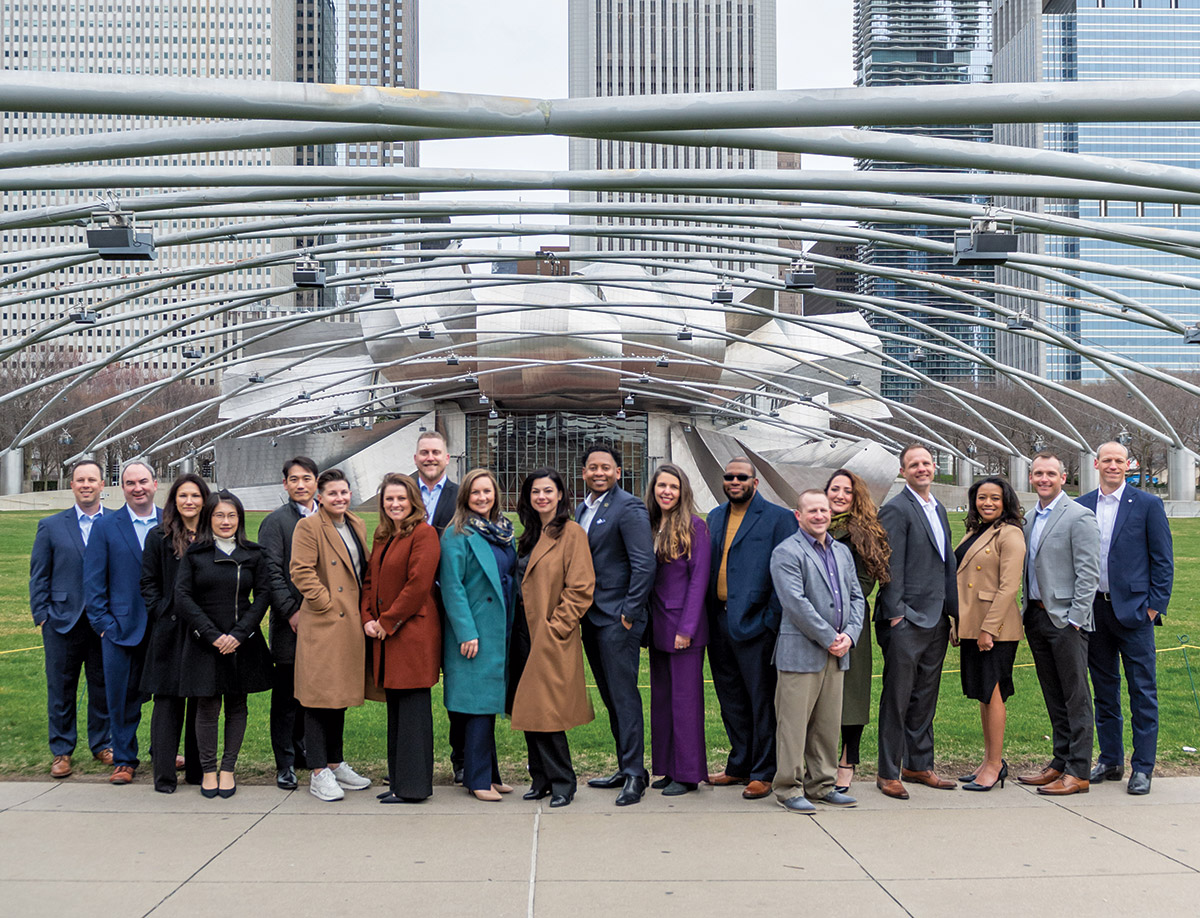
This year’s crop of Top 20 is anything but green. The winners average 14 years in the industry, and the average number of years in their current position is 3.4.
Photo by Jessica Savidge
Overall, higher construction costs fueled by limited labor pools, supply chain disruptions and crunched timelines are ushering in a period the Top 20 Under 40 calls the new normal.
“The value of people has certainly gone up,” says Victoria Jones, project delivery director at Transurban, adding that it’s even more so as firms “backfill” retiring workers. “It’s been our generation that’s had the ability to lead sooner. Gen Z is going to do it even faster,” she adds.
In effect, it’s critical for firms to build confidence in the next generation to make decisions, says the Top 20.
“One method we’re utilizing is building a succession plan early,” says STV’s Jeon, even for newer roles. “That way, when you’re learning something, you’re basically teaching somebody who’s coming right after you.”
Clark added that a faster pace also allows workers to quickly build experience. “An expert is not somebody who’s been here for 30 or 40 years. An expert in the moment is that person that has the most information and the most knowledge about that thing.”
An energy transition adds to the urgency for firms to adapt amid market challenges. In the transportation sector, the shift to electric vehicles is also shifting transportation planning, design and construction.
“An expert is not somebody who’s been here for 30 or 40 years. An expert in the moment is that person that has the most information and the most knowledge about that thing.”
KK Clark,
Project Executive, Clark Construction
Maryland’s Electric Vehicle Charging Station Law requires EV charging stations to include identifying signage, explains Lili Liang, deputy director of the Maryland Dept. of Transportation’s State Highway Administration. “That means now we need to develop a standard design for auditors, sections of the DOT—even the private owner such as an HOA, shopping center, parking lot or spaces in a garage,” she explains. “That will impact the standard or the specifications that are related to traffic engineering.”
As developers prepare for the future, electrical power infrastructure is often proactively baked into project plans, explains Kasie Bowden, general superintendent, Hensel Phelps. On a UCI health project in Irvine, Calif., Bowden says the health care provider noticeably dedicated a large percentage of its parking stalls to EVs.
“They have the required number of chargers to hit the standard,” says Bowden, explaining that Hensel Phelps also spent a lot of time coordinating with EV charging companies to ensure all stalls could be converted beyond the initially planned EV charging spots.
MMC Contractors Las Vegas Office President Tyler Bonwell says firms must also prepare for how all-electric might affect trade partners.
“Hopefully, standardization helps,” says Bonwell. “We’re a union contractor, so we have to know, when is it gas time? Or when is it charging time and how long will that take? That’s going to bring a different influx of unique situations that we’re going to have to work through around changing our fleet in the future. The availability of power on job sites, even in remote areas, will create a new set of challenges.”
The new normal feels like a bigger, faster, cheaper mentality, says Kyle Weller, vice president and general manager at Turner Construction Co. in San Antonio, Texas. Working amid many industry challenges pulling in different directions is a struggle, he adds.
Yet the new normal is also creating new opportunities to recruit workers with diverse skill sets, says Brian Derr, associate vice president and section head for special projects at Johnson, Mirmiran & Thompson Inc. “Solar farms, wind farms: those are emerging markets” that provide “opportunities to hire different people than what we have,” he notes.
JE Dunn’s Hoodjer adds: “At the end of the day, we’re problem solvers. Dig in, learn the facts, find the solution, move forward as a team.”
The Winners
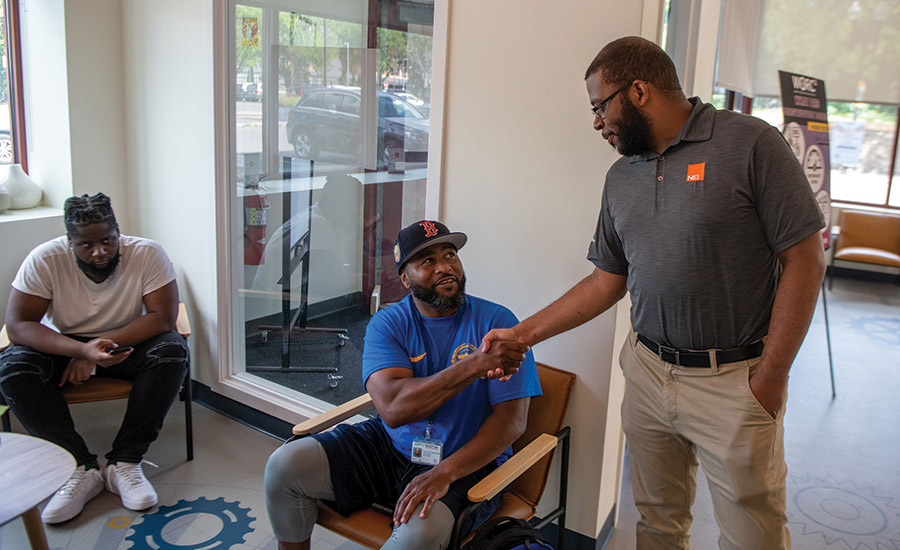
André Barbour
Diversity and Inclusion Director
NEI General Contracting
Randolph, Mass.
Construction is in Barbour’s DNA. As a teen, he started his career working for his architect father on a 48-unit affordable rental development for local nonprofit Nuestra CDC, sourcing more than a third of the project’s labor force from nearby zip codes and half from disadvantaged backgrounds.
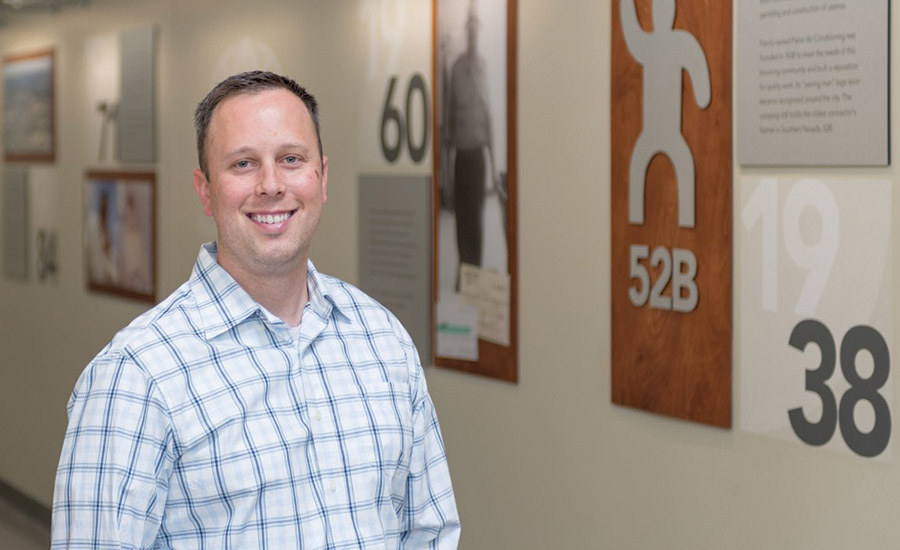
Tyler Bonwell
President, Las Vegas Office
MMC Contractors
Las Vegas, Nev.
Off hours, Bonwell harnesses his years of construction expertise for a community cause. He is a board member for the nonprofit Rebuilding Together Southern Nevada, providing critical home repairs for low-income households, which help revitalize communities and rebuild lives.
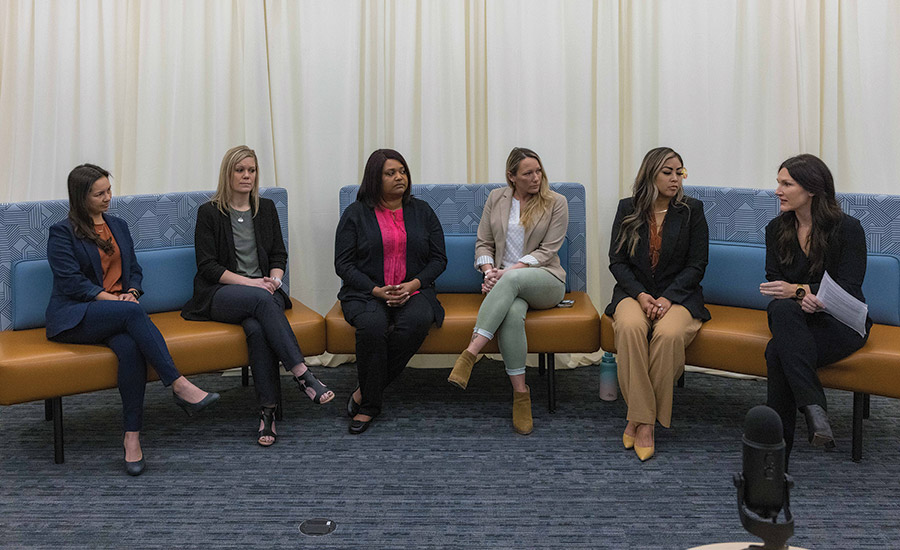
Kasie Bowden
General Superintendent
Hensel Phelps
Irvine, Calif.
A project superintendent and mother, Bowden manages construction projects from the field side of operations. In 17 years, Bowden has managed more than $2 billion worth of iconic programs, including for RFK Community Schools, the MLK Jr. Medical Center and three LAX terminal renovations.

KK Clark
Project Executive
Clark Construction
San Diego, Calif.
Clark uses her diversity and inclusion expertise to advance industry best practices. She served on Clark’s National Inclusion & Diversity Sounding Board, and in 2021 she helped establish the firm’s first employee resource group and its LGBTQ+ employee advocacy program.
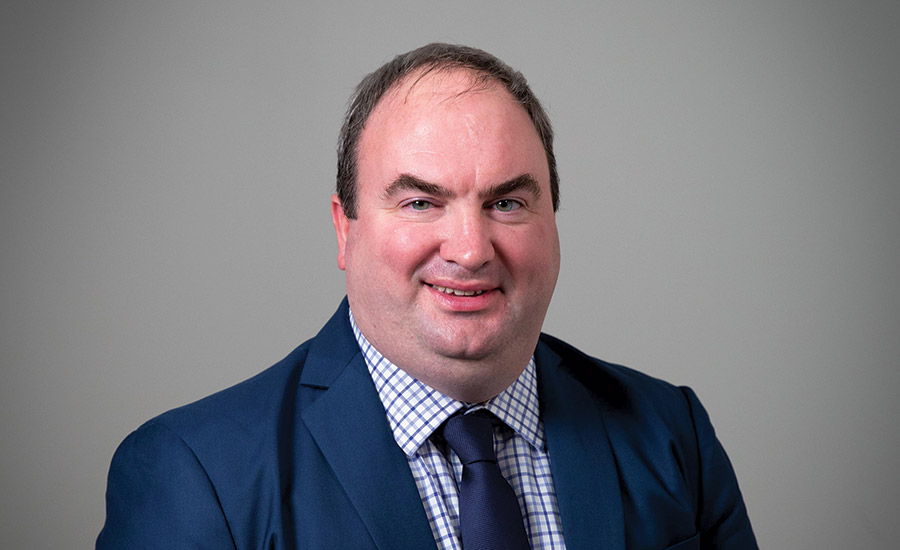
Brian Derr
Associate Vice President and Section Head - Special Projects
Johnson, Mirmiran & Thompson Inc.
Trenton, N.J.
Derr has a passion for developing engineers. He regularly reviews design basics with less experienced staff, and makes himself available for questions. He also participates in the company’s mentoring program, helping younger employees cultivate their areas of interest in engineering.
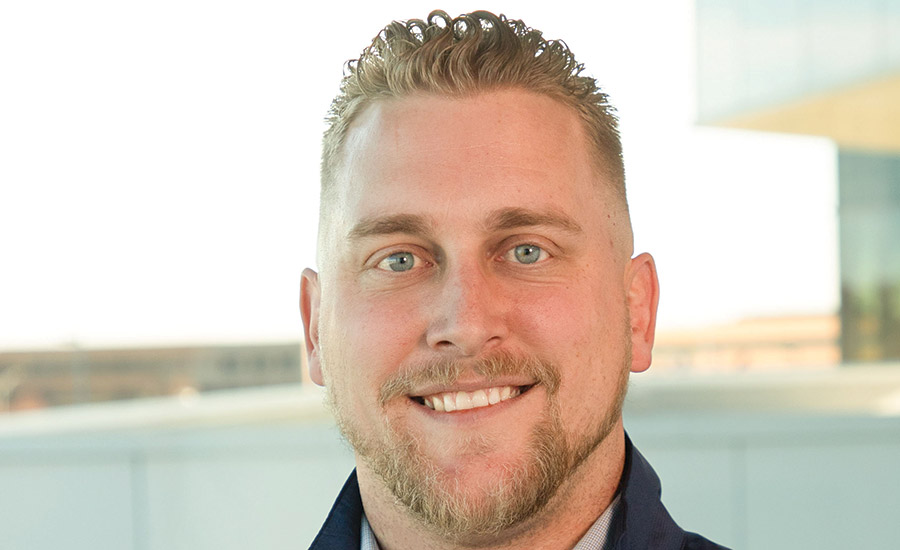
John Hoodjer
Vice President; Group Manager
JE Dunn Construction
Omaha, Neb.
Hoodjer has had a vital role in JE Dunn’s success. For nearly three years, he has served as the project executive on two greenfield campuses, spanning 400 acres, for a confidential mission critical client—which has resulted in 26 new hires, 5 million plus labor hours, and $2.6 billion in completed work.
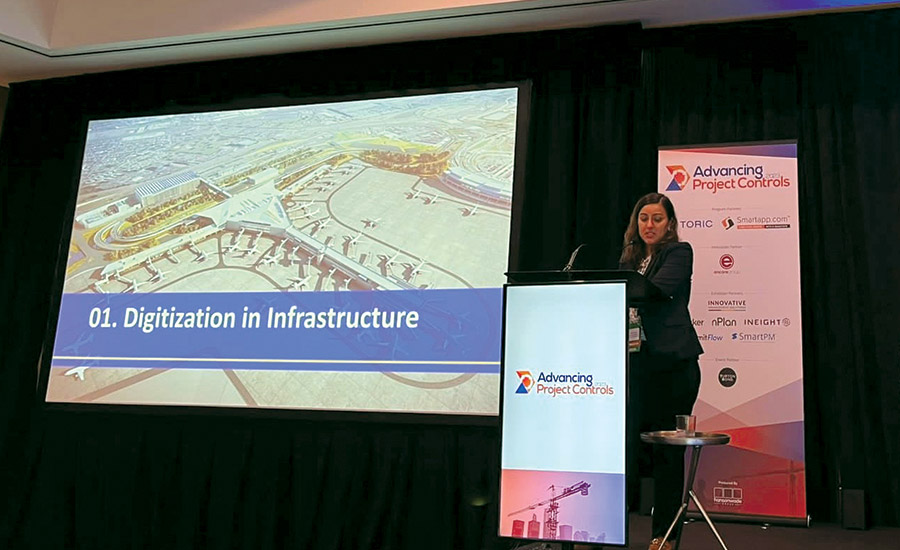
Sadia Janjua
Chief of Digital Transformation
Port Authority of New York & New Jersey
New York City
A champion and innovator of digital tool integration, Janjua has leveraged connected workspaces, process automation, data analytics and artificial intelligence to optimize PANYNJ’s processes, leading to increased efficiency, cost savings, and improved construction outcomes.
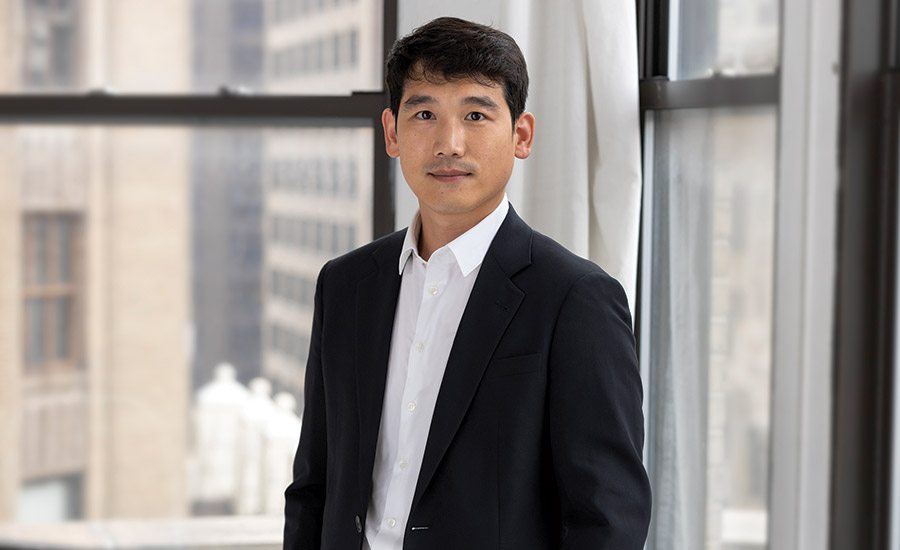
KiSeok Jeon
Vice President, Digital Advisory Lead
STV
New York City
Transitioning from architecture to digital advisory, Jeon has elevated STV’s processes and outcomes, and has an instrumental role in reimagining how the firm utilizes technology for internal and external projects. He is also a founding member and co-chair of the firm’s Technology Committee.

Rod Jones
Manager
Holder Construction Co.
Herndon, Va.
Jones has found his niche in managing high volume data-center projects and workforce development. Leading recruiting efforts every semester at his alma mater, Morgan State University, has helped develop the historically Black university as a talent resource for his firm’s teams.
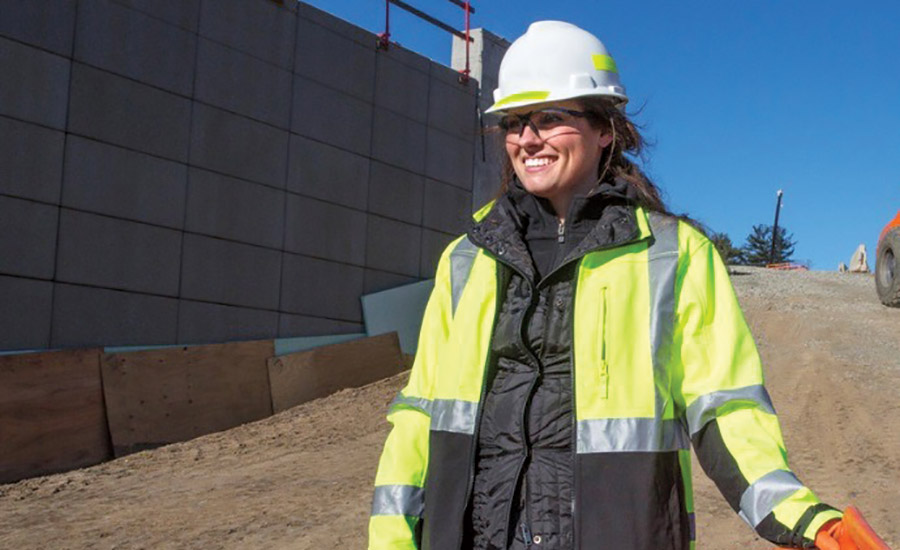
Victoria Jones
Project Delivery Director
Transurban
McLean, Va.
Jones’ advocacy for formal partnerships among P3 stakeholders, evidenced in the delivery of Virginia’s 495 Next project, showcases her ability to foster collaboration and create a positive working environment— an approach that has been crucial in driving project success.
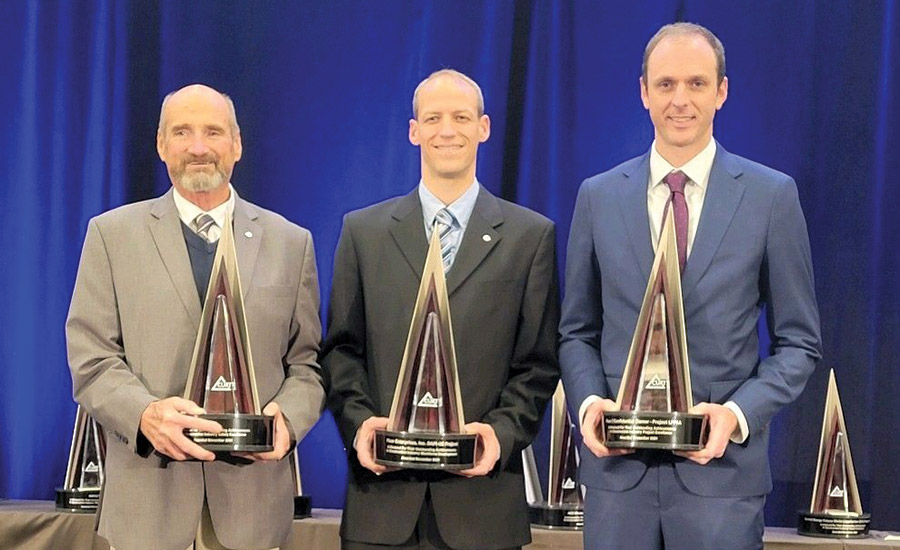
Justin Lamb
Project Director, General Manager, Research Triangle Park
Fluor, Morrisville, N.C.
On a megaproject from 2016-2020, Lamb (center) helped develop an after-hours NCCER training program that helped more than 600 craftworkers achieve NCCER certifications at no cost, which was recognized with the Construction Users Roundtable’s 2021 Workforce Development Award.

Lili Liang
Deputy Director
Maryland DOT State Highway Administration
Hanover, Md.
Liang was key in enhancing Maryland’s transportation standards and guidelines, leading the effort to update the traffic-related sections of the state’s “Standard Specifications for Construction and Materials” book to ensure they aligned with the latest federal and state regulations and best practices.
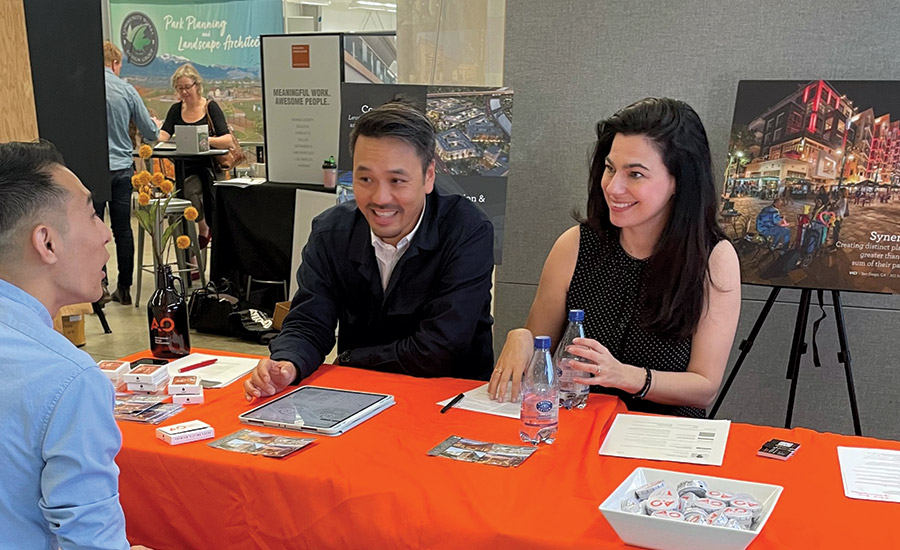
Ioanna Magiati
Partner
AO Architects
Orange, Calif.
Hailing from Greece, Magiati’s leadership and high-level technical and project management skills have helped her establish connections around the world. She has several design affiliations, including with the Urban Land Institute Orange County & Inland Empire Chapter.
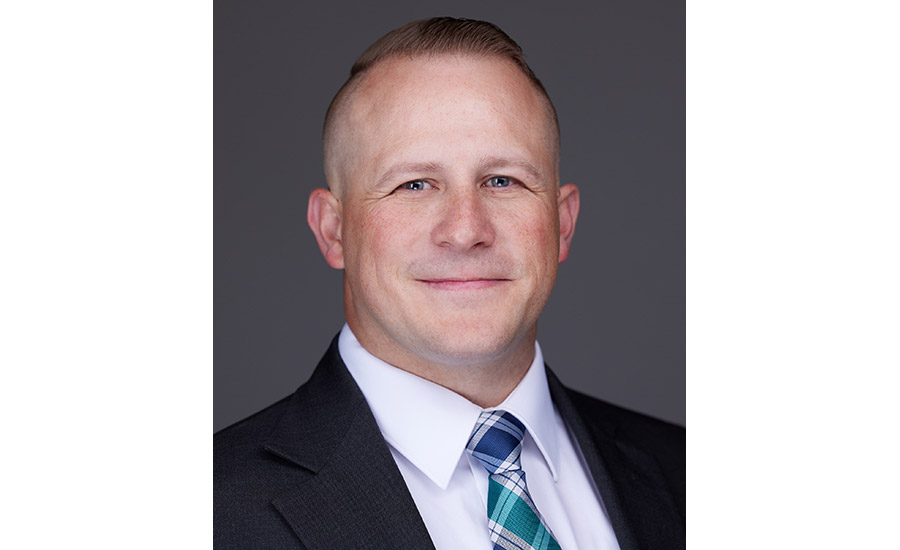
Rory Mele
Director of EHS
BHI
Vernal, Utah
Mele is committed to improving company processes. He developed an intranet and an environmental, health and safety (EHS) management system using Google Workspace applications at no company cost, showcasing his strategic thinking and resource management.
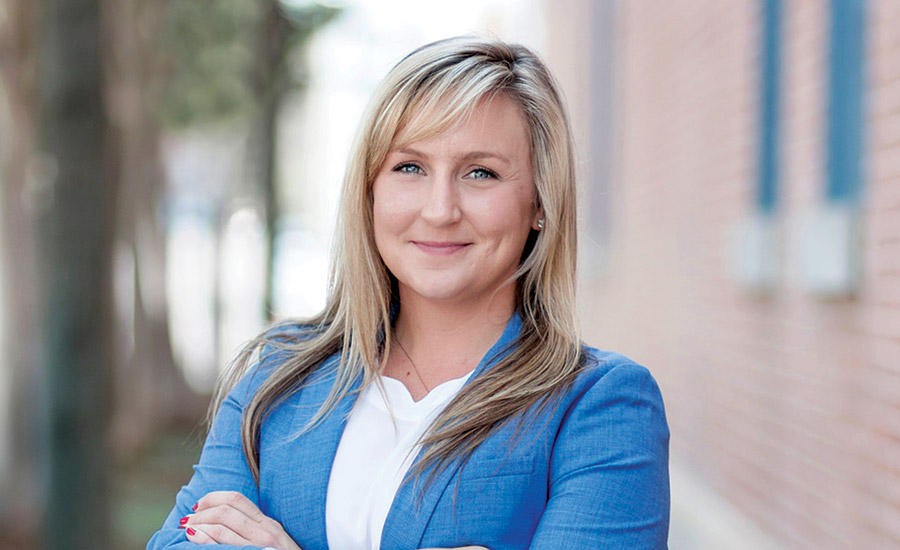
Aislinn Nagy
Senior Project Manager
Balfour Beatty Construction
Charlotte, N.C.
Nagy’s industry certifications include a Design-Build Institute of America professional designation and Leadership in Energy and Environmental Design Accredited Professional in Building Design and Construction credential, highlighting her expertise in sustainability and collaboration.
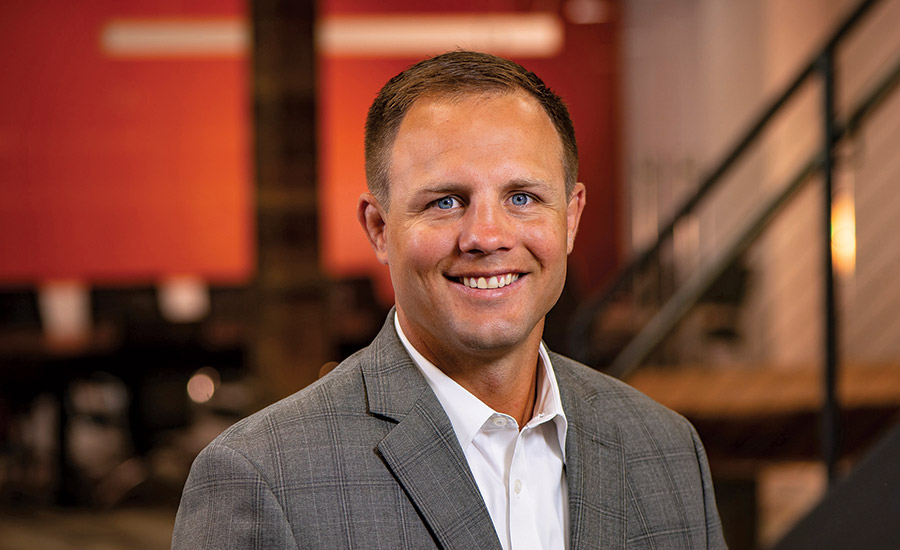
Ben Nichols
President and CEO
Harkins Builders
Columbia, Md.
In recent years, Nichols has been focused on Harkins’ 2025 Strategic Plan efforts, which include the creation of the Harkins’ Innovative Capital Reinvestment, an idea incubation program that encourages the firm’s employee-owners to think outside the box.
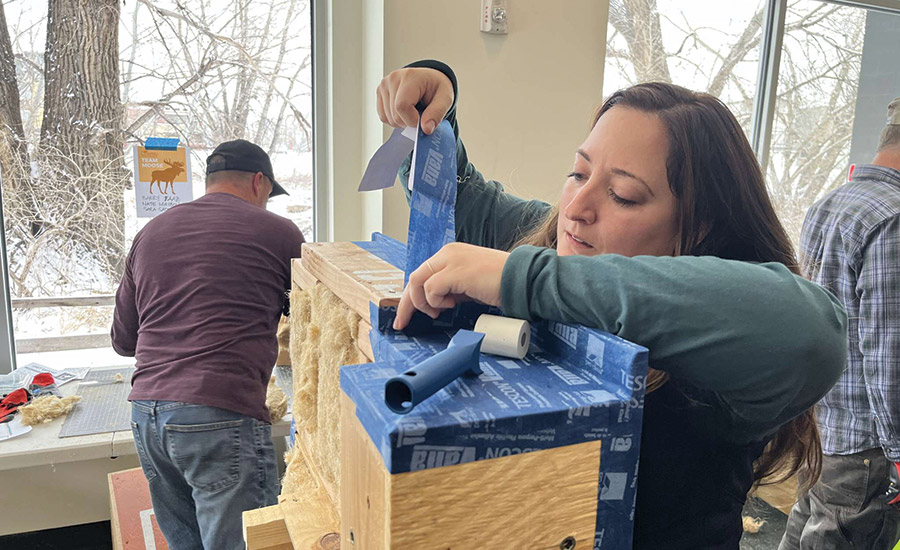
Sara Sadek
Director of Corporate QA/QC
PJ Dick
Pittsburgh, Pa.
Recognizing that strong leadership is key to cultural change, Sadek challenges teams to innovate to achieve quality compliance with practical solutions. She sets an example by proactively enrolling in coursework and conferences to stay on top of trends and compliance requirements.
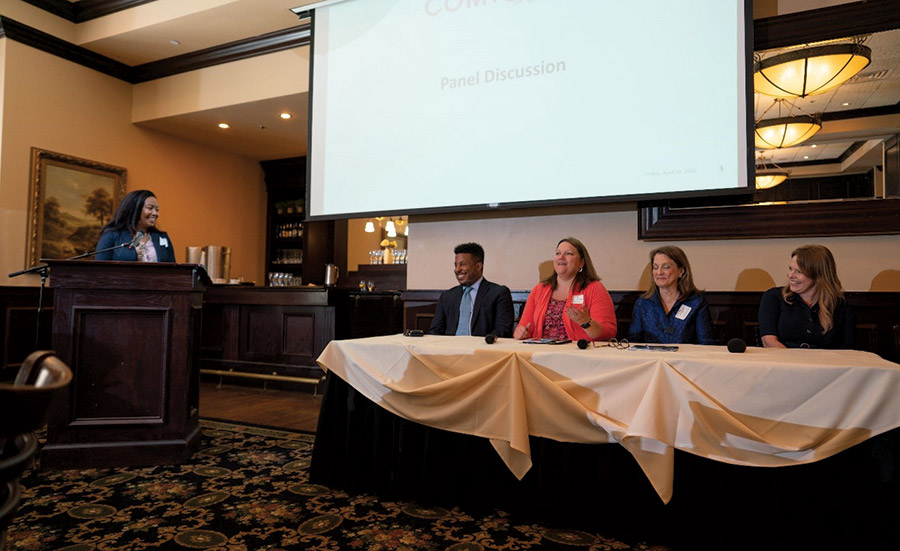
Lauren Taylor
Vice President, Texas District Planning Lead
WSP USA
Austin, Texas
As president of the Central Texas Association of Environmental Professionals, Taylor is helping to improve the transportation and planning industry, organizing several industry events, including the TxDOT Environmental Affairs Conference happy hour to raise money for a scholarship fund.

Irene Turletes
Water Resources Market Sector Lead
HDR Engineering Inc.
Anchorage, Alaska
Turletes has a vital role as the project manager for the Sterling Highway MP 45-60 project, one of the largest highway construction projects in Alaska, managing improvements to the Sterling Highway with minimal impact on the Kenai National Wildlife Refuge and local natural resources.
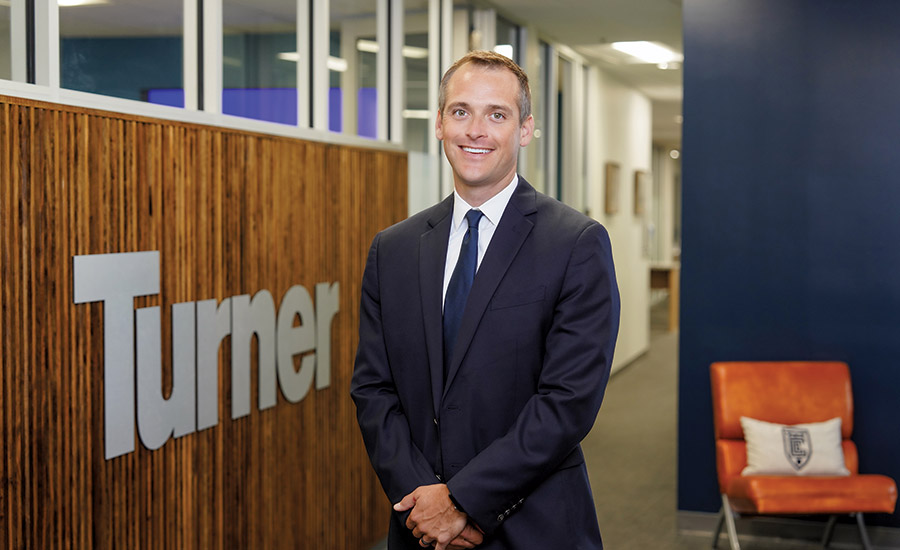
Kyle Weller
Vice President and General Manager
Turner Construction Co.
San Antonio
Weller became Turner’s youngest general manager in Texas, among the youngest at the company nationwide, and assumed overall responsibility for a team of more than 200 management and trade professionals and overseeing more than $300 million in annual revenue.












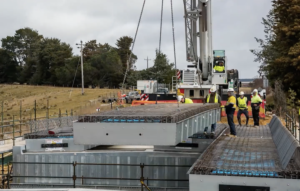




Post a comment to this article
Report Abusive Comment